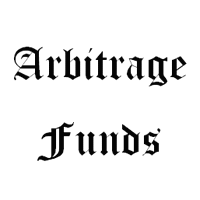Comex gold futures ended higher on Friday, underpinned by expectations that the nominee to lead the Federal Reserve Janet Yellen would continue easy monetary policy in that role. US regulatory filings for the third quarter showing that prominent Hedge fund Paulson & Co maintained its stake in SPDR Gold Trust, the world’s biggest gold-backed exchange-traded fund, also supported prices, after a surprisingly strong US labour-market reading re-ignited fears that the Federal Reserve would soon curtail bond purchases.
Outflows from the SPDR fund have amounted to more than 450 tonnes this year, driving its holdings to the lowest level since early 2009 at 865.71 tonnes. Gold prices have declined for much of 2013 amid fears the Fed would curtail its monthly bond purchases, removing a long-running source of support from the gold market.
Comex gold futures are moving in a narrow range. Charts are showing predominantly a bearish dominance.
As mentioned in the previous update, a fall below $1,315, is hinting that it might not rise as expected but could drift . The cyclical moves in the daily chart indicate that price could recover a little while staying above $1,275. The upside resistances are at $1,300 and could even extend till $1,315. Ideally this recovery should not exceed $1,315-20 in order to keep the price under the influence of bears for a later decline through $1,250. Unexpected recovery past $1,320 might hint at the possibility of strengthening further towards $1,355.
The wave counts need to be reviewed once again. A failed fifth wave move at $1,800 resulted in a corrective decline to $1,181 in the form of wave “A”. A possible wave “B” is in progress with targets near $1,420 or even higher to $1,485. This means a wave “C” is expected to follow through which could target $1,150 or even lower.
Alternatively, from the peak of $1,920 a corrective decline in the form of “A-B-C” is already over at $1,181 and a new impulse has begun. Confirmation of such an impulse will be seen at $1,535.
With the present move failing near $1,435-40, we will go with wave “B” ending at $1,433 and a possible Wave “C” underway with targets near $1,145-50 or even lower to $1,100.
RSI is in the neutral zone now indicating that it is neither oversold nor overbought. The averages in MACD have gone below the zero line of the indicator hinting at bearishness to be intact. Only a cross-over above the zero line could hint at bullishness again.
Therefore, look for gold futures to test the resistances and then decline .
Supports are at $1,275, 1,245 and 1,185. Resistances are at $1,300, 1,320 and 1,355.




